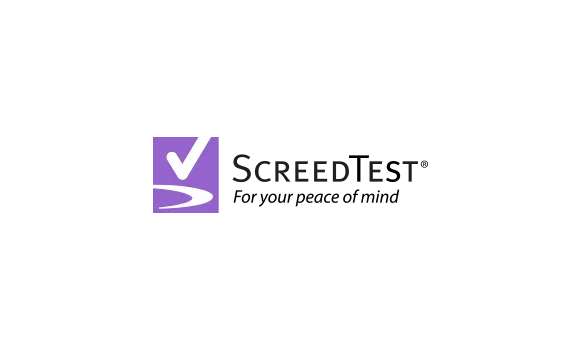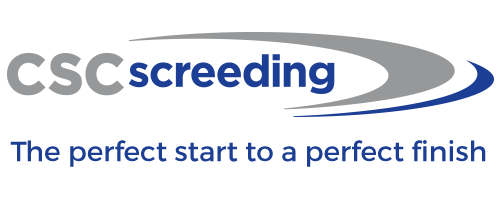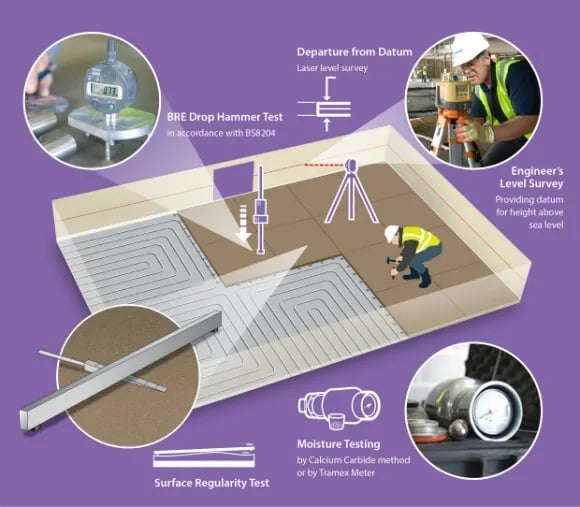
Screed testing – is it important?
Penetrating damp from residual moisture in the sub-floor is one of the most pervasive and damaging problems for home owners. On the other side, screed strength and surface regularity (SR) are two essential aspects in most commercial projects. The best way to prevent screed-related problems and ensure that the work performed meets the British Standards is to test the screed.
Although considered the last phase of the screed installation process, testing must be carried out throughout the entire project, from material selection and screed mixing through screed installation, curing, and drying.
Moisture Testing
For an accurate measurement of moisture in screeds, the recommended method is the calcium carbide test. . For this test, screeders place screed samples together with calcium carbide in sealed vessel. Calcium carbide will react with the moisture in the screed, releasing acetylene gas. A pressure gauge is used to measure the gas pressure; the readings from the gauge can be used to calculate the amount of moisture in the screed.
Tramex moisture meters can be used and deliver a convenient, though less accurate method, for measuring the surface moisture content in screeds. Tramex devices offer different measurement options and can record multiple results. However if the results are in doubt, they may still need to be confirmed with the calcium carbide test as it is the only way to ensure that an accurate moisture assessment is done before laying the final floor..
Screed Strength
As soon as the screed dries out, there is another test that must be performed: the BRE drop hammer test. A weight is dropped from a 1m rod four times onto a steel disc resting on the screed. The resulting indentation is measured to help specialists determine if the screed is strong enough to withstand the intended loading, without breaking.
Level Survey
In very specific applications, departure from datum level must also be assessed according to the specifications agreed upon at the project inception. Level surveys are especially important in small rooms and in areas where differences in levels can make a huge difference to usability (e.g. doorways). According to the British Standards, departure from datum level should not exceed ±15mm. In smaller spaces, deviation may be much less. To measure departure from datum, experts use special electronic devices, such as rotary laser level, which can record multiple results automatically.
Surface Regularity
The surface regularity of a floor is important for the final floor finish. It can be measured with a 2m straight edge on legs at multiple points on the floor. Surface regularity ranges between SR1 and SR3. Most floors are laid to SR2 (standard = 5mm), though some floor finishes, such as wooden and tile floors, require finer tolerances. During screed installation, the quality and consistency of the screed along with mixing techniques and locations where screeds are mixed must be carefully assessed for perfect results to be achieved.At BuilderScreed, our team of professionals is able not only to provide expert advice, but also to supply a variety of materials, carry out the installation of screeds and under-floor heating systems, and test the end result to ensure the success of your project. Contact us today, and you will be able to concentrate on your overall construction project, knowing that your screeding tasks are in good hands.
BuilderScreed is a division of CSCScreeding Ltd.

